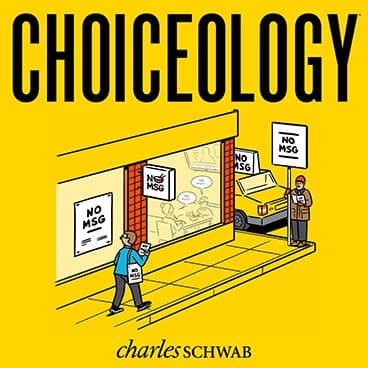Repeat After Me: With Guests Jennifer LeMesurier & Tali Sharot
Vitamin C is a cure for the common cold. Bats are blind. Sugar makes children hyperactive.
All of these statements are false. So why are they so pervasive? And why do they feel so true?
In this episode of Choiceology with Katy Milkman, we look at a phenomenon that can cause us to believe inaccurate information more than we should, and also lead us to trust reliable information less than we should.
If you’re over a certain age, you might remember friends or family panicking about MSG, or monosodium glutamate, particularly in American Chinese food. But those health concerns stemmed from a single letter to the editor in The New England Journal of Medicine—and a media storm that repeated false information. Jennifer LeMesurier learned about this letter and set off on a journey to trace the origins of the MSG scare and find out why the myths about this ingredient are so persistent.
Jennifer LeMesurier is an associate professor of writing and rhetoric at Colgate University and the author of Inscrutable Eating: Asian Appetites and the Rhetorics of Racial Consumption.
Next, Katy speaks with Tali Sharot about her research on the illusory truth effect—the idea that people are more likely to believe and share repeated information, whether or not the information is accurate.
You can learn more in the paper Tali co-authored, titled "The Illusory Truth Effect Leads to the Spread of Misinformation."
Tali Sharot is a professor of cognitive neuroscience at University College London and an affiliated professor in MIT's Department of Brain and Cognitive Sciences. Her most recent book, co-authored with Cass R. Sunstein, is Look Again: The Power of Noticing What Was Always There.
If you enjoy the show, please leave a rating or review on Apple Podcasts.
Learn more about behavioral finance.
Explore more topics
The comments, views, and opinions expressed in the presentation are those of the speakers and do not necessarily represent the views of Charles Schwab.
Data contained herein from third party providers is obtained from what are considered reliable source. However, its accuracy, completeness or reliability cannot be guaranteed and Charles Schwab & Co. expressly disclaims any liability, including incidental or consequential damages, arising from errors or omissions in this publication.
All corporate names and market data shown above are for illustrative purposes only and are not a recommendation, offer to sell, or a solicitation of an offer to buy any security. Supporting documentation for any claims or statistical information is available upon request.
Investing involves risk including loss of principal.
The book How to Change: The Science of Getting from Where You Are to Where You Want to Be is not affiliated with, sponsored by, or endorsed by Charles Schwab & Co., Inc. (CS&Co.). Charles Schwab & Co., Inc. (CS&Co.) has not reviewed the book and makes no representations about its content.
Apple, the Apple logo, iPad, iPhone, and Apple Podcasts are trademarks of Apple Inc., registered in the U.S. and other countries. App Store is a service mark of Apple Inc.
Google Podcasts and the Google Podcasts logo are trademarks of Google LLC.
Spotify and the Spotify logo are registered trademarks of Spotify AB.



